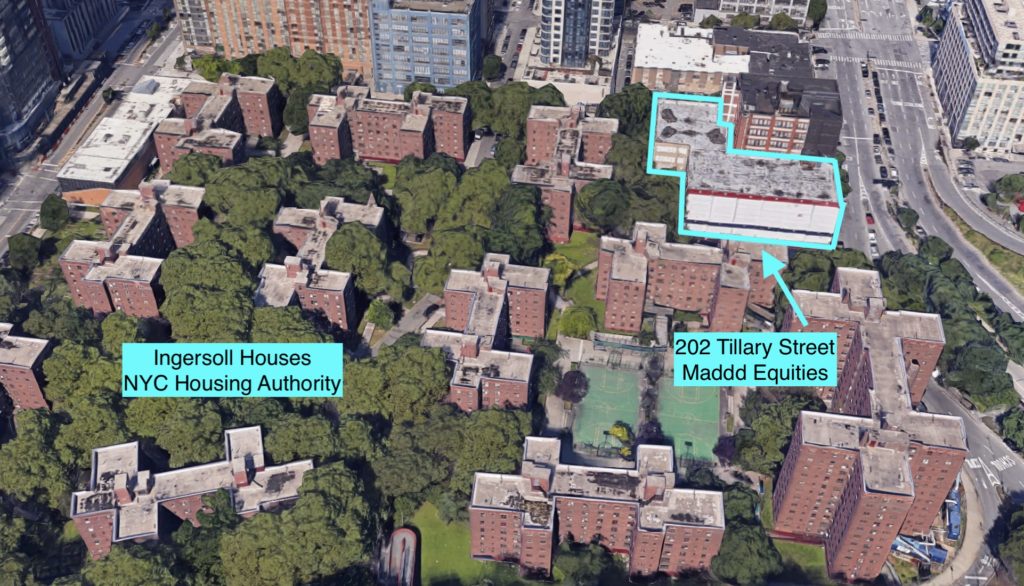Developers eye NYCHA’s air rights

202 Tillary Street, owned by Maddd Equities, is seeking air rights from Ingersoll Houses (Credit: Google)
Madison Realty, Maddd Equities, among firms with plans to buy a portion of the agency’s estimated

202 Tillary Street, owned by Maddd Equities, is seeking air rights from Ingersoll Houses (Credit: Google)